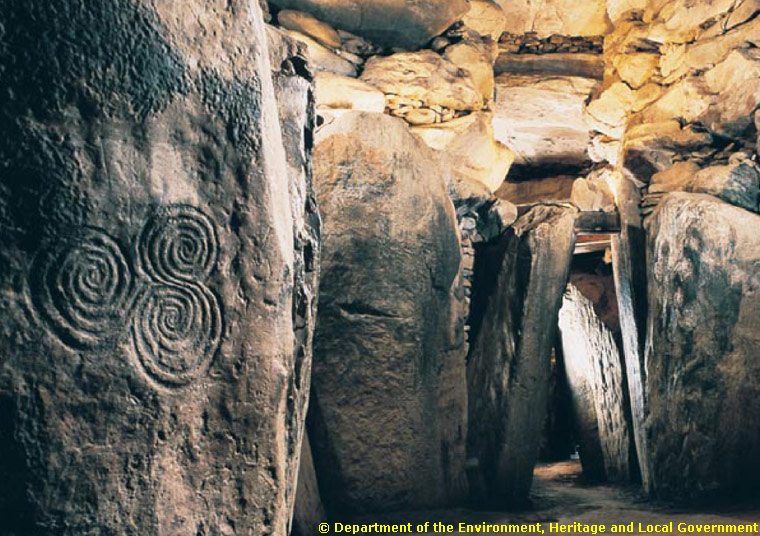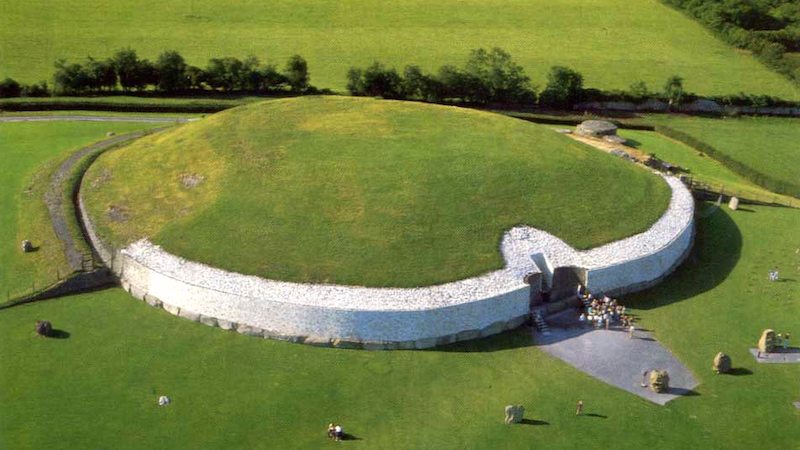Newgrange
Episode #2 of the course “Mysterious World Landmarks”
The mound called Newgrange in County Meath, Ireland, is a complex that is over 5000 years old. Pre-dating the Great Pyramid at Giza as well as the rocks at Stonehenge, no one knows who built this neolithic structure. Newgrange is part of the larger Brú na Bóinne complex, which was declared a UNESCO World Heritage Site in 1993. It is one of the best examples of Neolithic architecture from ancient Europeans, and its origins, purpose, and design elements continue to be studied and debated today.
Local legends attribute Newgrange either as the home of supernatural beings or as the burial mound of ancient heroes. Opening to the south, Newgrange is aligned to be flooded with light during the winter solstice, so for this reason, most researchers assert that it served a religious ceremonial purpose.
The Newgrange mound is approximately 250 feet across, with a long chambered passage running through over one-third its length. It is built from layers of earth and stone and features quartz stones studded throughout, as well as grass growing on top. A curb of nearly 100 stones surrounds the perimeter. Inside the passage that takes visitors to the center inside the mound there are stone slabs, a basin stone, and decorative art that gives clues to the building’s original purpose. However, no one is sure what it was used for.


Many of the stones both inside and outside are decorated with intricate carvings of geometric patterns, spirals, and other abstract symbols. While the art remains inspirational, what is truly amazing is that the people who carved the symbols had not yet developed metal tools and were probably working with animal antler, bone, or stone carving implements.
Share with friends

